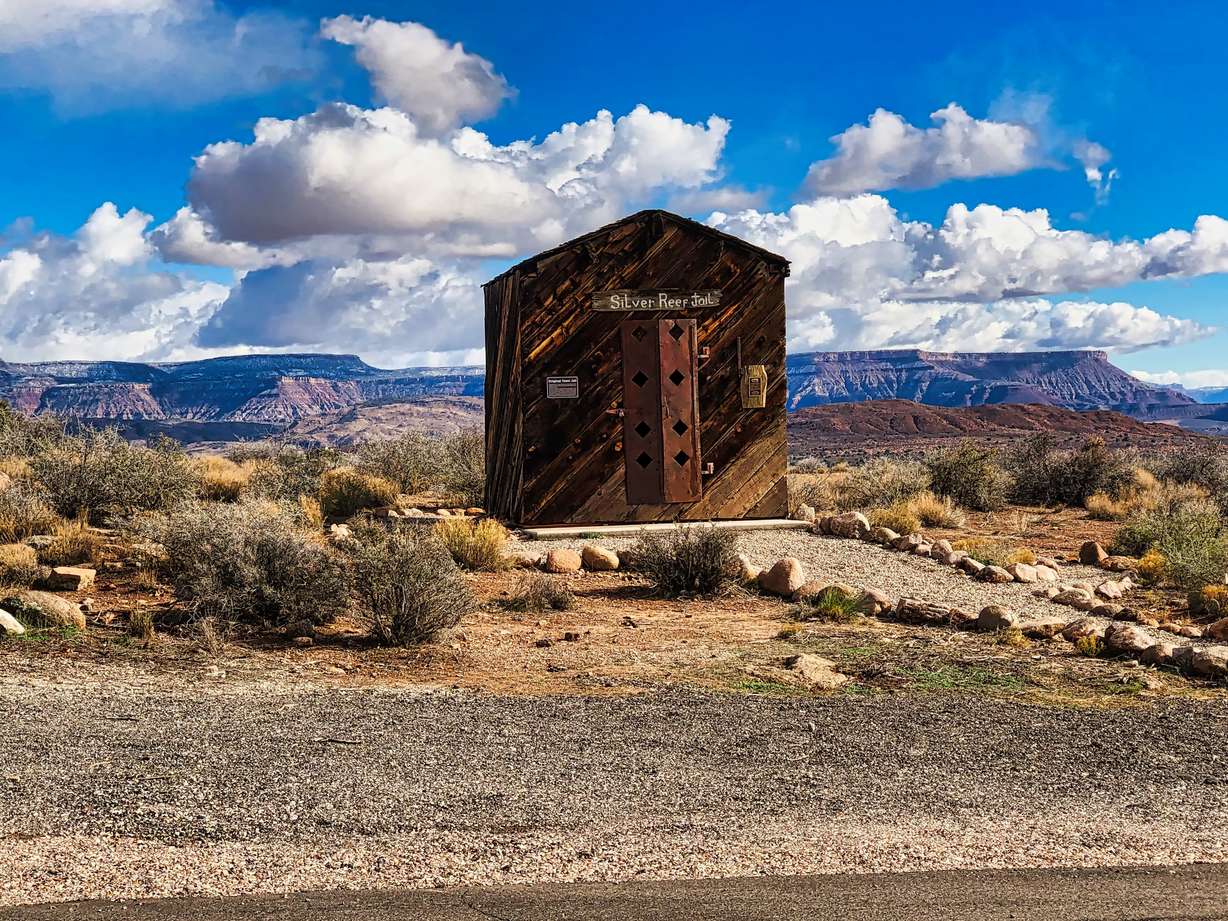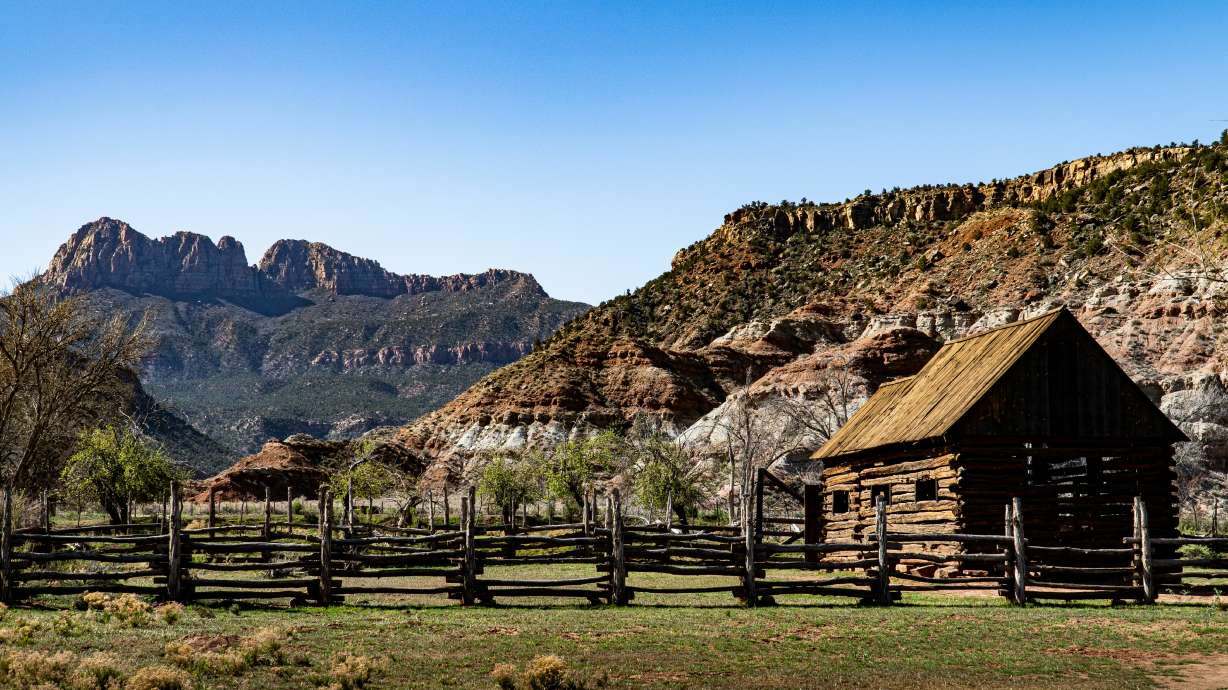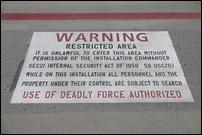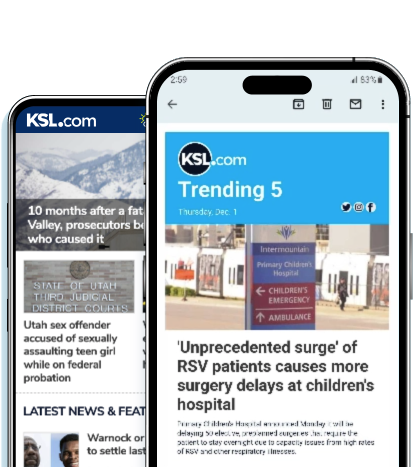Estimated read time: 6-7 minutes
Exploring Utah's ghost towns and history is a popular summer pastime for many families. These locations allow visitors to experience the atmosphere of a forgotten period of Utah history.
The majority of Utah ghost towns have slipped away with little or no trace remaining. A handful are preserved and restored to give visitors a glimpse into what life was like for early Utah pioneers.
Here are a few of these historical treasures with public access and plenty to see.
Silver Reef
The ghost town of Silver Reef is one of the hottest and driest locations in Utah. When a prospector discovered silver in the local sandstone, 21 claims and several miners established the community of Bonanza City.
Utah History Encyclopedia explains that because the Bonanza City land values were too high for most to afford, many people moved north and set up the community of Silver Reef.
By 1879, about 2,000 people were living in Silver Reef. The town had a mile-long Main Street with thriving businesses, but its heyday only lasted 30 years, according to the Bureau of Land Management.

In 1879, a fire destroyed several businesses, but the residents rebuilt them. Mines were gradually closed, most of them by 1884, as the international price of silver dropped. By 1901, most of the buildings in town had either been demolished or moved to Leeds.
The mine re-opened in 1916 with new management, only to struggle in future years because of the Great Depression. The site opened sporadically for uranium mining from 1951 to the early 1980s.
Today, the Wells Fargo Office, Cosmopolitan Restaurant, Rice Building and numerous foundations and walls remain in the town site, which has been absorbed by the neighboring community of Leeds.
Grafton
Grafton, located near Zion National Park, was a thriving settlement from 1859 until about 1906, according to the Grafton Heritage Partner Project.
The town was established as a cotton-growing project in 1859, but the settlement encountered problems with flooding and geographical separation from other towns.
The community prospered for several years despite obstacles and residents built orchards and irrigation canals. Eventually, severe flooding and American Indian attacks during the Black Hawk War led to a population decline.

The Washington County Historical Society reports the entire town of Grafton was empty by 1921. Beginning in 1929, the abandoned Grafton attracted filmmakers and visitors drawn to its historical past and beautiful landscape. VisitUtah.com states it is one of the West's most photographed ghost towns.
Restoration of the ghost town began in 1997 by the Grafton Heritage Partnership Project (Partnership). The project describes its purpose "is to preserve and enhance the outstanding historical, agricultural, scenic, riparian, and cultural values of the Grafton historic townsite for the benefit of present and future generations."
A rebuilt schoolhouse, church and cemetery show what life was like for pioneers in Southern Utah. A self-guided walking tour allows visitors to discover its historical background through educational displays.
Ophir
This town is unique because with a population of 38 by definition it does not entirely meet the requirements of a ghost town.
Located 45 minutes west of Lehi, Ophir was established in 1870 and was named after a town in the bible that provided precious metals to King Solomon, according to mining history from Rio Tinto/Kennecott.
Ghost Towns and More reports military troops in the Rush Valley discovered Native Americans in the area were using pure silver bullets. They persuaded the local Goshute tribe members to tell them where they got the metal. Mining began for silver, gold, zinc and lead and the town flourished with saloons, dance halls, schools and theaters. The mines finally closed in the early 1970s.
Ophir now includes an outdoor museum with a few streets to walk and small buildings to tour. In the summer months the reconstructed school, post office, shoe shop and a handful of houses are open, though it is difficult to find a schedule.
A report from Utah's Adventure Family states the operation is run by volunteers and is easy to navigate. The train car is now a quaint make-shift visitor's center and a path circles up the hill and past several of the houses and shops. Another path goes farther up the hill to the school.
Because the area is entirely privately owned, please be respectful and stick to the places that have been restored for public viewing. Residents who still live there likely don't want you parking in front of their homes or picnicking in their yards.
Cove Fort
Built in 1867, Cove Fort served as a safe haven for travelers as well as residents from surrounding communities, according to VisitUtah.com.
"The area around Cove Creek was a particularly dangerous resting place for travelers as 30 miles of uninhabited desert lay in both directions," explains Intermountainhistories.org. "On April 12, 1867, Circleville resident Ira Hinckley received a letter from Brigham Young extending a calling for him to construct a fort near Cove Creek. Its purpose was to 'afford protection from the Indians to the telegraph and mail stations and to travelers who are almost constantly on the road. Also to furnish feed and protection from and weather to this latter class.' Hinckley immediately told the messenger to tell Brigham Young he would accept the calling."

After it was built, the Gilmer Salisbury Stagecoach line stopped at Cove Fort twice a day and as many as 75 people would stay and eat at the fort at one time. Serving as an important regional communications hub, there was also a telegraph office," the visitutah site states. It never became a substantial settlement because of insufficient water.
Today the restored fort is owned and operated by The Church of Jesus Christ of Latter-day Saints as a historic site open to the public seven days a week. The fort is free to visit.
Siegfried & Jensen
Since 1990, Siegfried & Jensen have been helping the people of Utah and surrounding states who have suffered needless injuries and death caused by car accidents, truck accidents, medical malpractice, defective drugs, dog bites, wrongful death, and other types of personal injury.
The firm is committed to keeping Utah families and communities safe by ensuring wrongdoers are held accountable. While a lawsuit isn't always the answer when it is needed having someone on your side can mean the difference between declaring bankruptcy and rebuilding your life and moving forward, especially when you're up against an insurance company or a hospital.
Siegfried & Jensen has represented more than 35,000 clients and recovered over $1.2 billion for them.









